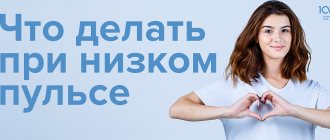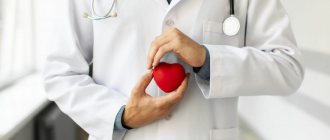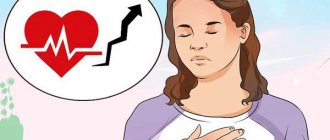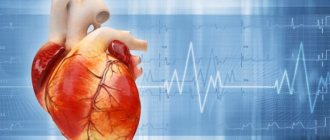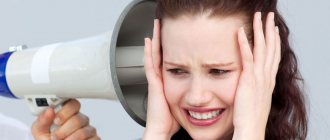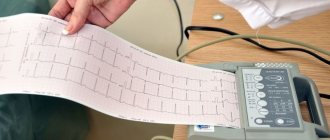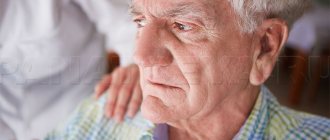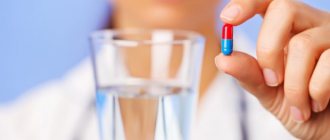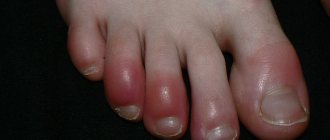Unfortunately, even the strongest and healthiest people who care about their health are faced with various diseases. Most often, suffering is caused by the heart and blood vessels, which cause not only considerable discomfort, but also fear for one’s life. Vibration in the heart area or trembling is accompanied by constant discomfort, expressed either only in the heart or in the entire body at once. To cope with such a pathology, you should urgently consult a doctor and undergo an examination.
Why does it occur
The causes of palpitations vary. It can occur with normal, high or low blood pressure.
Strong heartbeat is normal in the following cases:
- During physical activity: sports, physical work, weight lifting, fast walking, running, and so on.
- Under emotional stress: fear, excitement, joy, anger, irritation, etc.
- When body temperature rises, for example, during infectious diseases. When t increases by 1 degree, heart rate increases by 10 beats per minute.
- In case of an allergic reaction.
- From overeating.
- From drinking energy drinks.
- During menopause.
The heart begins to beat faster at normal pressure during physical activity, after eating, in moments of emotional experiences
The causes of pathological tachycardia are various diseases, including:
- cardiosclerosis;
- myocardial dystrophy;
- arrhythmia;
- anemia;
- vegetative-vascular dystonia;
- disturbances in the functioning of the endocrine system;
- hypoxia;
- heart defects.
Finding the exact cause of an increase in heart rate can only be done through comprehensive diagnostics.
Classification of noise and main causes
- Functional - appear with anemia, high fever, pregnancy, thyroid diseases.
- Accidental (harmless).
- Organic – consequences of anatomical changes in valves and septa.
By the nature of localization:
- intracardiac;
- extracardiac;
- vascular.
Organic are divided into:
- pleurocardial – caused by adhesions between the pericardium and pleura;
- pericardial friction rub – observed with pericardial effusion and dry pericarditis.
Functional:
- cardiopulmonary (“systolic breathing”) – occurs when, during systole, areas of lung tissue that were previously compressed by the heart muscle straighten;
- chordal;
- muscular;
- valve
In relation to the phase of the cardiac cycle:
- systolic (often found in myocardial infarction, mitral valve insufficiency);
- diastolic (for rheumatism).
By intensity (rated on a six-point scale):
- 1/6: listen with maximum concentration of attention;
- 2/6: the noise is not loud, but sonorous enough to be heard immediately;
- 3/6: loud and audible;
- 4/6: loud and accompanied by tremors on palpation;
- 5/6: heard when applying the edge of the phonendoscope;
- 6/6: heard when the phonendoscope membrane is just approaching the site of auscultation.
How to help yourself with palpitations
If a person has an attack of tachycardia for the first time, and he does not suspect that he has pathologies, he needs to do the following:
- open a window indoors;
- unbutton the collar of your clothes;
- wash with cool water;
- If possible, you should definitely lie down or at least sit down, but do not remain on your feet.
- take medicine (it can be corvalol, valocordin, validol, valerian, motherwort).
Valerian will calm not only the heart, but also the nerves
Many people panic during an attack of tachycardia, especially if it happened at night. You need to calm down and start breathing correctly. If your heart rate increases, you need to take a deep breath, then hold your breath, push and exhale slowly. Relief does not occur immediately, so it is recommended to do the exercise for about five minutes.
If your heartbeat is strong, you can try coughing.
Another remedy that helps stop attacks of tachycardia, accompanied by dizziness and loss of coordination of movement, is eye massage. It's very simple to do:
- close your eyes and press your fingertips on your eyeballs;
- hold your fingers over your eyes for about 10 seconds, then release;
- repeat after 10 seconds.
Effects on biologically active points located on the fingers help with tachycardia. The little finger and thumb are responsible for the functioning of the cardiovascular system. If your heart beats fast, on both hands you need to press the tip of your little finger on the base of your thumbnail.
Traditional medicine suggests rubbing the back of the wrists, where there are active points associated with the functioning of the cardiovascular system.
If your heart rate increases, you can smell crushed lemon balm or mint leaves. These herbs are good for the heart and calm the nerves
A strong heartbeat may be a warning sign of a stroke or heart attack. In this case, immediate assistance is required. You need to call an ambulance and take sedatives.
If attacks of tachycardia are repeated frequently, forcing you to wake up at night, while the person does not know about their causes, you need to contact your local physician for examination and diagnosis. The doctor will prescribe an electrocardiogram and a stress ECG.
Arrhythmia attack: when the heart asks for help
The human heart is a unique organ that itself creates impulses that contribute to its beating. In the absence of problems with the myocardium, these shocks are not felt. If a person hears them, it means that the heart’s function is impaired. This condition of the heart muscle is called arrhythmia.
Types and symptoms of pathology
Arrhythmia is a pathological process due to which there are disturbances in the frequency, rhythm, and contraction of the heart. In a person with normal functioning of the sinus node, the speed of tremors fluctuates between 60-90 beats/minute. During an attack of arrhythmia, their number may decrease or increase, depending on the type of pathology.
Arrhythmia occurs in the presence of predisposing factors:
- neurocirculatory dystonia is a mental disorder characterized by the spontaneous occurrence of panic attacks;
- thyroid diseases (thyrotoxicosis, hyperthyroidism and others);
- cardiomyopathy, myocarditis;
- cardiac ischemia;
- previous heart attack;
- hypertension (high blood pressure);
- heart defects;
- pregnancy.
More than 10 types of arrhythmias occur in medicine. They differ in origin, symptoms, and course of the disease.
8
24/7
Sinus bradycardia
An attack of arrhythmia in which the pulse rate is below 55 beats per minute is called bradycardia. It can be recognized by the following symptoms:
- blood pressure surges;
- severe weakness;
- dizziness;
- feeling of discomfort in the heart area.
Bradycardia can even occur in people who exercise while they are resting or sleeping. Typically, the pathology is accompanied by low blood pressure and decreased thyroid function.
Paroxysmal tachycardia
A condition in which the heart rate reaches 240 beats per minute is called tachycardia. There are 2 forms of it: pathological (with existing heart disease) and physiological.
It is dangerous because it reduces the level of blood filling of the ventricles, which negatively affects the general condition of the internal organs.
You can recognize it by the following signs:
- cardiopalmus;
- blurred or darkened vision;
- chest pain;
- dizziness, fainting;
- profuse sweating.
Sinus arrhythmia
With such an arrhythmia, the heart rate decreases during inspiration and increases during exhalation. This condition often occurs in teenagers and pregnant women. An attack of this type of arrhythmia does not have a negative impact on the person’s condition and does not require treatment.
Atrial fibrillation
The pathology of the heart rhythm is caused by incomplete contraction of the atria, and the ventricles, on the contrary, often contract, reaching 240 beats/minute; in dangerous conditions, the heart rate reaches 600 beats. A prolonged (more than 2 days) attack of atrial fibrillation provokes the formation of blood clots, ischemic stroke, and death. There are 2 types of it: chronic (lasts more than a week) and transient (manifested by relapses).
Atrial fibrillation is accompanied by the following symptoms:
- trembling in the chest;
- weak pulse compared to heart rate;
- anxiety, fear;
- lack of air;
- dizziness, sometimes loss of consciousness.
This type of arrhythmia affects men much more often than women.
Extrasystole
Heart disease is considered the most common form among arrhythmias. It is expressed by untimely contractions of the atria.
Among the patient complaints, the following symptoms were noted:
- strong heartbeats or sensations of heart stopping;
- lack of oxygen;
- excessive sweating;
- fear of dying;
- pallor of the skin.
Medications are used to help with an attack of arrhythmia.
It is noted that extrasystole is more associated with vegetative or psycho-emotional disorders.
8
24/7
Ventricular or atrial flutter and heart block are the worst types of arrhythmia. Signs of pathologies are:
- loss of consciousness (fainting);
- hoarse, confused breathing;
- no pulsation;
- cardiac arrest;
- signs of clinical death.
In this case, it is necessary to try to stop the arrhythmia attack on your own by resorting to emergency measures, otherwise the patient may not wait for the cardiac team to arrive.
Causes
The causes of arrhythmia attacks lie in the conduction system of the heart muscle. If there is a failure in it, a person develops one of the types of pathology. The direct provocateurs of arrhythmia attacks are diseases of the heart itself (ischemic heart disease, heart attack, defects, cardiac dystrophy, cor pulmonale, pathologies of the conduction system). However, there are other reasons, which include:
- kidney and stomach diseases;
- tumors;
- hormonal imbalance;
- stressful situations, psychological disorders;
- diseases of the central and autonomic nervous system;
- head injuries, disturbances in the blood supply to the brain;
- drug intolerance or overdose;
- violations of water-salt metabolism;
- changes in the level of oxygen and carbon dioxide in the blood;
- atherosclerosis (narrowing, blockage of blood vessels);
- anesthesia of cardiac tissue;
- electric shock;
- heart surgery.
Based on all of the above, it is clear that there are a huge number of reasons for the development of arrhythmia.
Diagnosis of arrhythmia
At an appointment with a cardiologist, you should tell all the existing signs of the disease. The clinical picture will help the doctor make an approximate diagnosis. However, the patient will need to undergo additional examination to determine the exact cause of the disorders.
One of the first diagnostic methods is listening to heart sounds (auscultation), as well as electrocardiography. In some cases, Holter monitoring is performed. To do this, use a special device that is not removed throughout the day. The purpose of this type of diagnosis is to monitor the heart rate within 24 hours. With its help, any deviations in heart rhythm are recorded.
If, however, deviations are not recorded, an arrhythmia attack is artificially induced.
- Electrophysiological research method. To do this, a catheter is placed in a vein that leads to the heart, and electrical stimulation of the heart muscle is performed. The method allows you to accurately determine the presence and stage of arrhythmia.
- Stimulation through the esophagus.
- Tilt test.
Treatment at different stages
If an arrhythmia attack occurs for the first time, you need to call an ambulance and carry out first aid measures. You should follow the instructions for emergency resuscitation step by step:
- put the patient into bed or sit the patient in a chair;
- calm down and open the window to let fresh air in;
- in severe cases, it is necessary to provoke a gag reflex;
- perform a breathing exercise in which, closing your eyes and taking a deep breath, hold the exhalation for a couple of seconds;
- give the patient sedatives (Corvalol, Valocordin, motherwort tincture).
Qualified specialists know how to relieve an attack of arrhythmia with the help of medications. In medical practice, medications are used to relieve attacks:
- sodium channel blockers (Quinidine, Novocainomide, Propafenone, Lidocaine);
- beta-blockers (Egilok, Bisoprolol, Atenolol, Metoprolol);
- potassium channel blockers (Amidarone, Sotohexal, Cordarone, Nimotol);
- calcium channel blockers (Amlodipine, Dilteazem, Nimotol, Verapamil).
Cardiac glycosides, magnesium and potassium preparations (Asparkam, Panangin) are also used.
In the absence of effect from drug treatment, deterioration of the patient's condition and serious heart disease, surgical intervention is performed.
Forecast
If there is an arrhythmia that does not pose a threat to human life, there is no need to worry about treatment. However, you can live a normal life even with serious forms of arrhythmia.
The prognosis for the disease mainly depends on the patient himself. To normalize the condition, you need to follow simple rules:
- strictly follow all recommendations of the attending physician;
- tell the doctor about the side effects of the prescribed medications, do not replace them yourself and report any worsening of the condition;
- monitor blood tests.
Prevention
To prevent arrhythmia attacks, doctors will tell the patient what to do:
- promptly treat existing diseases of any body system, including infectious diseases;
- adhere to proper nutrition (exclude fatty, fried, sweet foods, or at least reduce their consumption to a minimum);
- engage in simple physical exercise (do exercises in the morning, walk in the park or other places with low levels of air pollution);
- monitor your daily routine (healthy sleep for at least 8 hours, naps for 20-60 minutes during the day);
- get rid of bad habits (alcohol, smoking, drugs, drinking energy drinks and large amounts of coffee);
- maintain normal weight;
- control blood sugar levels in diabetes and blood pressure in hypertension;
- experience more positive emotions, avoid stressful situations.
An attack of cardiac arrhythmia is a difficult condition. However, it is treatable. The main thing is not to neglect timely diagnosis and consult a doctor in case of any violations. By undergoing an annual examination, you can reduce the likelihood of developing severe pathologies to a minimum and significantly improve your quality of life. Visiting a doctor today is the key to good health and longevity in the future.
8
24/7
Palpitations and increased blood pressure
Tachycardia is often characterized not only by rapid heartbeat, but also by hypertension. If you have high blood pressure during an attack, you need to take the following measures:
- Sit or lie down comfortably and try to completely relax.
- Drink some cold water. As it passes through the esophagus, it puts pressure on the heart, thereby normalizing its function.
- Sometimes washing with cold water can help.
- Another way to lower your heart rate if your blood pressure is high is to take a deep breath, cover your nose and mouth with your hand, and try to exhale.
- If the cause of the attack is stress, relaxation, aromatherapy and meditation will help.
- With pronounced palpitations, doctors advise taking anaprilin.
- The menu should include more seafood and fish, which are rich in omega-3 fatty acids.
- Vitamin complexes should be taken by those who have tachycardia with high blood pressure caused by a lack of magnesium in the body.
During an attack of tachycardia, you need to take a comfortable position and relax
conclusions
Heart murmurs always cause the doctor to be wary and apprehensive. With the help of detection, a serious disease is diagnosed in a timely manner. Then treatment is prescribed. Sometimes these same noises are caused by functional changes, as a result of which you just need to adhere to a healthy lifestyle and follow these rules:
- monitor cholesterol levels;
- control the amount of iron in the blood;
- adhere to the principles of rational nutrition;
- perform regular physical exercise (if there are no contraindications).
Palpitations with low blood pressure
In hypotensive patients, tachycardia occurs quite often. Signs such as rapid heartbeat and low blood pressure are characteristic of the following pathological conditions:
- shock (anaphylactic, traumatic);
- vegetative-vascular dystonia;
- heavy bleeding.
With tachycardia developing against the background of hypotension, the following symptoms are often observed:
- nausea, vomiting;
- dizziness;
- headache;
- pale skin;
- pain in the heart and stomach;
- feeling of fear, increased anxiety.
Tachycardia in pregnant women
During pregnancy, significant changes occur in a woman’s body and it begins to work in a different mode. Rapid heartbeat (up to 100 beats per minute or higher) is normal during this period. Often, tachycardia during pregnancy is mild and does not pose a danger. But it happens that it is accompanied by unpleasant symptoms:
- headaches;
- dizziness;
- chest pain;
- sometimes fainting.
Doctors recommend that the expectant mother:
- rest more;
- avoid stress;
- drink more clean water.
If palpitations bother a woman during pregnancy, she should consult a cardiologist.
Rapid heartbeat in a child
Children have a higher heart rate than adults. Moreover, the younger the child, the faster his heart beats. Typically, palpitations in children have the following causes:
- fear, joy, stressful situation;
- exercise stress;
- cardiac and non-cardiac diseases;
- weather change.
If the increase in heart rate is associated with emotional or physical stress, then it will normalize on its own.
But tachycardia is not always harmless. It may be a sign of a serious illness, for example, heart failure, arrhythmia, myocarditis.
The child may experience acute attacks of rapid heartbeat, which are called paroxysmal tachycardia. Sometimes they last for several hours and are accompanied by dizziness, nausea, chest pain, convulsions, cold sweat, and fainting.
A child with tachycardia experiences fear and has difficulty breathing. He needs to be calmed down and an ambulance quickly called.
First aid
If tremors develop sharply in the chest, and there is also frequent contraction of the heart muscle, you need to immediately stop physical activity, leave the room into the open air, and breathe well. When treating another person with signs of vibration in the chest, it is recommended to lay the patient on any horizontal surface. Loosen your tie or unbutton the top buttons and let fresh air into the room.
If a person’s face begins to suddenly turn pale, it is necessary to raise the lower limbs slightly higher than the body; the manifestation of such signs indicates imminent fainting or preconditions for a stroke. If the cause of the pathology is problems with the main organ, it is necessary to give the patient a tincture of Valerian or Motherwort to drink.
How to treat
Treatment is prescribed depending on the cause. It is important to relieve the patient of unpleasant symptoms: dizziness, headache, nausea, shortness of breath, fainting.
Two methods are usually used: drug therapy and folk remedies.
Treatment with drugs
To combat tachycardia you need to take the following medications:
- Sedatives. These include natural remedies based on medicinal herbs. This is motherwort, valerian, Novo-passit. They can be produced in tablets, drops, tinctures.
- Antiarrhythmic. These tablets normalize the heartbeat. You cannot drink them on your own, only as prescribed by a doctor. These include Flecainide, Verapamil and others.
Verapamil is a drug that allows you to quickly stop an attack of tachycardia
To treat tachycardia, tablets of four groups are taken:
- Cardiac glycosides (Dogoxin).
- Beta blockers (Atenolol, Concor).
- Sedatives (Novo-passit).
- Antioxidants (Mexico, Preductal).
Herbal treatment
Most often, mint, lemon balm, chamomile, St. John's wort, motherwort and others are used to treat palpitations at home.
To normalize heart rate and blood pressure, you can prepare an infusion of herbs. To do this, you will need to take a spoonful of dried valerian root, yarrow herb and lemon balm. Mix the ingredients, pour boiling water and place in a water bath for 40 minutes. When it cools down, strain and drink.
Another effective remedy is hawthorn. The aqueous extract of the fruit should be taken three times a day, 20 drops per ¼ glass of water before meals. To prepare, you will need a tablespoon of crushed fruits, which you need to pour a glass of boiling water, put on low heat and cook until half the original volume remains.
An infusion can be prepared from hawthorn flowers. To do this, pour a glass of boiling water over the flowers (a teaspoon) and place in a water bath for 15 minutes. Take half a glass twice a day before meals.
Treatment
Having received the results of additional examination methods, the doctor carries out differential diagnosis and prescribes treatment. First of all, the condition that led to the appearance of sound defects is eliminated, since the causes of heart murmurs in adults are very diverse. So, for anemia, iron supplements are prescribed. As hemoglobin levels are restored, the noise level decreases.
In case of endocrine system disorders, consultation with an endocrinologist is necessary. By correcting the condition and prescribing drug therapy, surgery (as in the case of identifying pheochromacytoma), the noise caused by the diagnosed pathology is eliminated.
During pregnancy, unless, of course, it is accompanied by complications, the noise goes away immediately after birth.
There is also the option of determining systolic murmur for minor abnormalities of the heart muscle. Since they do not manifest themselves clinically and do not interfere with the patient’s life, treatment is not prescribed in such cases. This category of patients requires consultation with a cardiologist and ultrasound of the heart at least once a year. When dealing with organic organ damage, delay in starting therapy is unacceptable.
Drugs prescribed for the treatment of patients with abnormalities in auscultation:
- Anticoagulants. The mechanism of action is aimed at reducing blood viscosity and preventing the formation of blood clots (Dicoumarin, Warfarin, Heparin).
- Diuretic medications remove fluid from the body, reduce swelling and stress on the heart (Furosemide, Veroshpiron, Hydrochlorothiazide).
- Beta blockers reduce the number of heart contractions (Anaprilin, Bisoprolol).
- Statins reduce cholesterol levels in the blood, which improves blood circulation (Atorvastatin, Lovastatin).
Surgical options:
- Balloon valvuloplasty. The essence of the operation is to restore the normal diameter of the valve. A catheter with a small balloon is inserted into the heart through an access in the femoral artery.
Its position is regulated by an X-ray machine. After reaching the problem area, the doctor inflates the balloon and the valve expands. After this, the system is deflated and the catheter is removed. The success of the operation is monitored using fluoroscopic equipment. - Annuloplasty. The intervention is classified as valve-sparing. Its goal is to create additional support for the fibrous valve ring using special implanted elements.
- Commissurotomy. A surgical procedure that involves separating valve adhesions. Indication for this procedure is valve stenosis.
- Replacing valves. This operation is advisable when the surgeon cannot restore the damaged valve using more gentle methods. During the intervention, the worn valve is replaced with a mechanical or biological implant.
As a preventive measure
In order to prevent attacks of tachycardia, it is recommended:
- Avoid stress and high physical activity.
- Avoid drinking black tea and coffee or limit their consumption and give preference to green tea.
- Instead of tea, you can drink an infusion of hawthorn and rose hips, which helps normalize heart rate. To prepare it, mix the fruits of these plants in equal proportions, add boiling water and infuse.
- If tachycardia develops against the background of hypertension, green oat juice (drink 50 g three times a day) or infusion of blue cornflower flowers (take ½ glass three times a day) helps well. If you are prone to heart attacks with high blood pressure, it is recommended to take a tablespoon a day of Adonis infusion and drink green tea with mint or lemon balm leaves.
